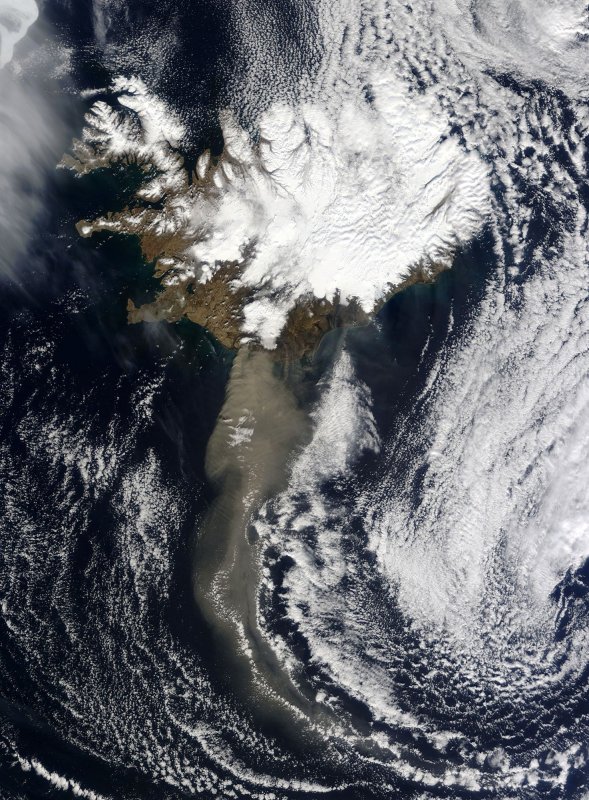PITTSBURGH, April 27 (UPI) -- A U.S. volcanologist has compiled the first high-resolution visible and thermal images of the erupting Icelandic volcano Eyjafjallajoekull.
The images were captured by a joint NASA-Japanese satellite sensor and compiled by University of Pittsburgh Associate Professor Michael Ramsey. The images, scientists said, provide the first clear glimpse of the volcano that has disrupted air travel worldwide since it began erupting April 14.















